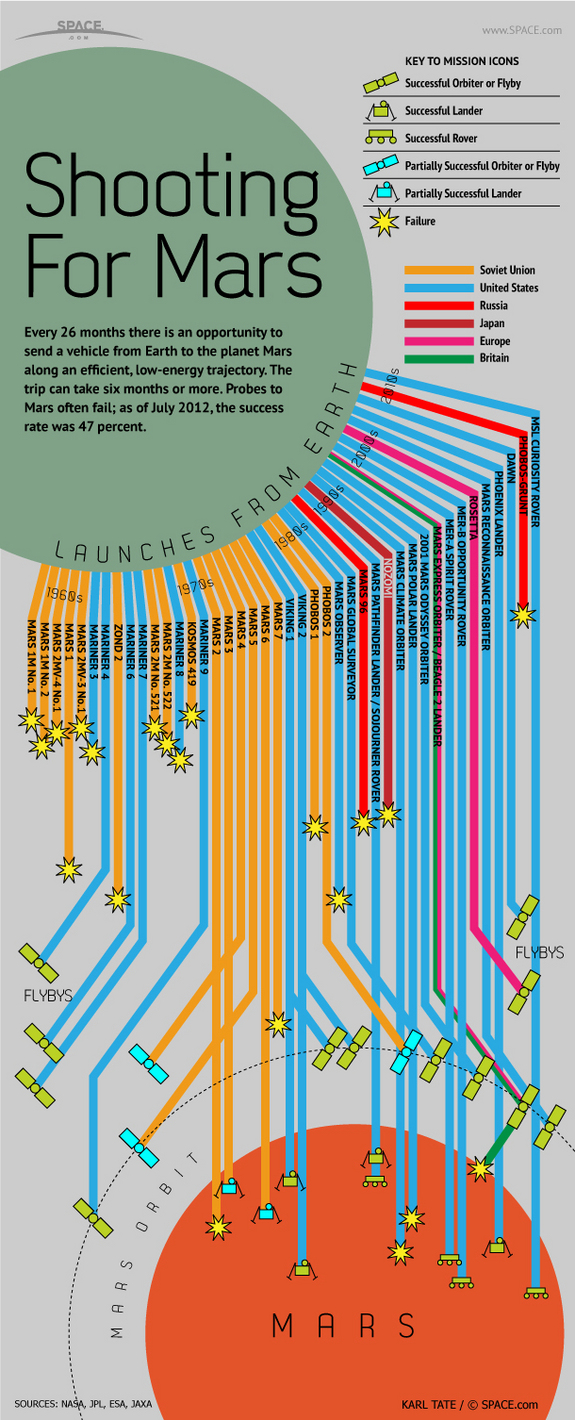Every 26 months there is an opportunity to send a vehicle from Earth to the planet Mars along an efficient, low-energy trajectory. The trip can take six months or more. Probes to Mars often fail; as of July 2012, the success rate was 47 percent.
The Soviet Union was first to attempt to send unmanned space probes to Mars. Several failed, but in 1971 the lander Mars 2 became the first object from Earth to reach the surface of the Red Planet. Unfortunately Mars 2 crashed rather than landing softly. Its sister probe, Mars 3, did manage to land on Dec. 2, 1971. The Mars 3 lander transmitted data for a few seconds before falling silent.
The first truly successful Mars surface probes were the Viking 1 and 2 landers, sent from the United States, which touched down in 1976. The landers gathered soil samples for analysis using their robotic arms, and they thoroughly photographed the area surrounding their landing sites.

Source SPACE.com: All about our solar system, outer space and exploration
Another milestone was reached in 1997, when the Mars Pathfinder was landed by the United States. Pathfinder released a tiny remote-controlled rover, called Sojourner, which explored the Martian surface for nearly three months before contact was lost.
- Mars Rover Curiosity: Complete Mars Science Laboratory Mission Coverage
- How Mars Rover Curiosity’s Nail-Biting Landing Works (Pictures)
- Mars Myths & Misconceptions: Quiz








